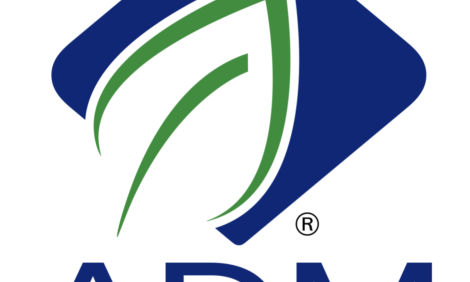



CME: How Will PEDv Impact Pig Supplies?
US - How will PEDv impact pig supplies?, ask Steve Meyer and Len Steiner.About the only answer they are are sure of is "They will be smaller than they otherwise would have been."
"That is not much help for market analysts and participants but, even in the wake of our earlier efforts to estimate actual numbers, it is in truth the best we can do," they say
The National Animal Health Laboratory Network released the data for PEDv sample submissions through 4 August. The network is administered by USDA’s Animal Plant Helath Inspection Service and the summary is posted each week at www.aasv.com, the website of the American Association of Swine Veterinarians. Some important numbers in this week’s report are:
- 27 new "accessions" (veterinary speak, we think, for "cases") testing positive for PEDv. That number is slightly smaller than the 31 new cases the week of 28 July but larger than the 24 cases of the previous week. It is also significantly lower than the 44-55 new cases reported in all but one week from 20 May through 16 June.
- Twelve of those cases were in suckling pigs - the largest such weekly number recorded so far and up from seven new suckling pig cases the previous week. Six new cases were sow/boar samples. Only nine were in grow/finish pigs, a number sharply lower then the 20-30 that were being recorded in May and early June.
- For the second straight week, there were only two new cases in North Carolina. It was feared that the disease could explode there due to the state’s high pig density but there have been an average of less than three cases per week since it first appeared there the last week of June.
- Iowa had the most new cases, nine, during the week and still has the largest number of total cases at 163. Oklahoma is still second at 107 but submitted only five positives the week of 4 August. That marks the fourth week in the last six that Oklahoma’s number has been less than ten. We understand that most of these are in the Panhandle region where hogs are quite dense.
- Kansas is now third on the list of positive cases at 41 with six new ones in the most recent week of data. The authors believe these cases are primarily in southwest Kansas near the Oklahoma cases and part of the production enterprises that grew in the '90s to feed Seaboard Farms’ plant in Guymon, OK.
But what do these case numbers tell us about pig numbers? While we have attempted to estimate those in the past, our confidence in those numbers is diminishing as we learn more about the data. The most significant supply impacts are on suckling pigs where death losses are frequently above 90 per cent.
The authors' estimates used the "accession" numbers for suckling pigs and sow/boar to represent the number of sow farms that had been impacted. We then assumed that each farm had 2,500 sows that would normally wean an average of 25 pigs per sow per year and that all of the production for five weeks died. Those assumptions, of course, may be wrong but we think they are likely reasonable given the locations of many of the "accessions".
The trouble, though, is that no one beyond the producer and the attending veterinarian knows the exact source of the samples and, therefore, the nature of the source farm. Each "accession" may involve multiple positive samples. But more than one "accession" can be from the same farm if they are separate in time. So, a follow-up positive test on the same farm would be counted as a separate "accession" and thus, by our method, count the farm twice.
In addition, if any producer or veterinarian observes newly-scoured pigs and concludes that PEDv is the problem without submitting any samples, the farm is not counted at all. What are the odds of one positive error and one negative error offsetting each other so that the total is correct? How about a few dozen such errors?
What the authors can say - they think - is this:
- Their original assumption of five weeks of lost pigs was too high. Their understanding is that the losses usually cover three to four weeks at which time immunity levels become high enough that sows pass immunity along to their piglets, stopping the outbreak. We have revised our computations to account for four weeks.
- Their loss estimates are still in the 60,000 to 100,000 head lost per week range beginning in mid-June are reasonable but shaky based on our lack of knowledge about the source data.
- Realizing the shakiness of the numbers, they have increased with the past two weeks’ data as the number of cases added was larger than was the number of cases dropped from the four-week total.
It is important to note that these death losses — however large they are — will not impact slaughter until mid-December. But neither the February nor April Lean Hogs contracts have reacted much, if any, to the news of mounting pig losses. The authors still believe that markets are a bit efficient, so the information should have had an impact, right?
The only supply impacts on older pigs should be a slight delay in marketings. Therefore, we could see a slight delay in the usual seasonal increase in hog weights but even that will be difficult to measure since we are comparing to such unusual weights one year ago when producers were aggressively trying to reduce feed usage.
We are now only two weeks away from the next USDA survey of hogs and pigs numbers and six weeks away from the September 'Hogs and Pigs' Report. Unlike the June report which covered only a few early weeks of the PEDv outbreak, this survey will cover a period in which the disease spread dramatically. Its impacts should be reflected in USDA’s estimates of the June-August pig crop and the under-50 pound pig inventory. PEDv should also be reflected in the average number of pigs saved per litter which, you may recall, was record high in the March-May quarter at 10.31.
With that said, we need to remember that USDA’s report is only as good as the survey responses it receives from producers. While always important, complete and accurate survey responses may be more critical this quarter due to the unknown impact of PEDv.







